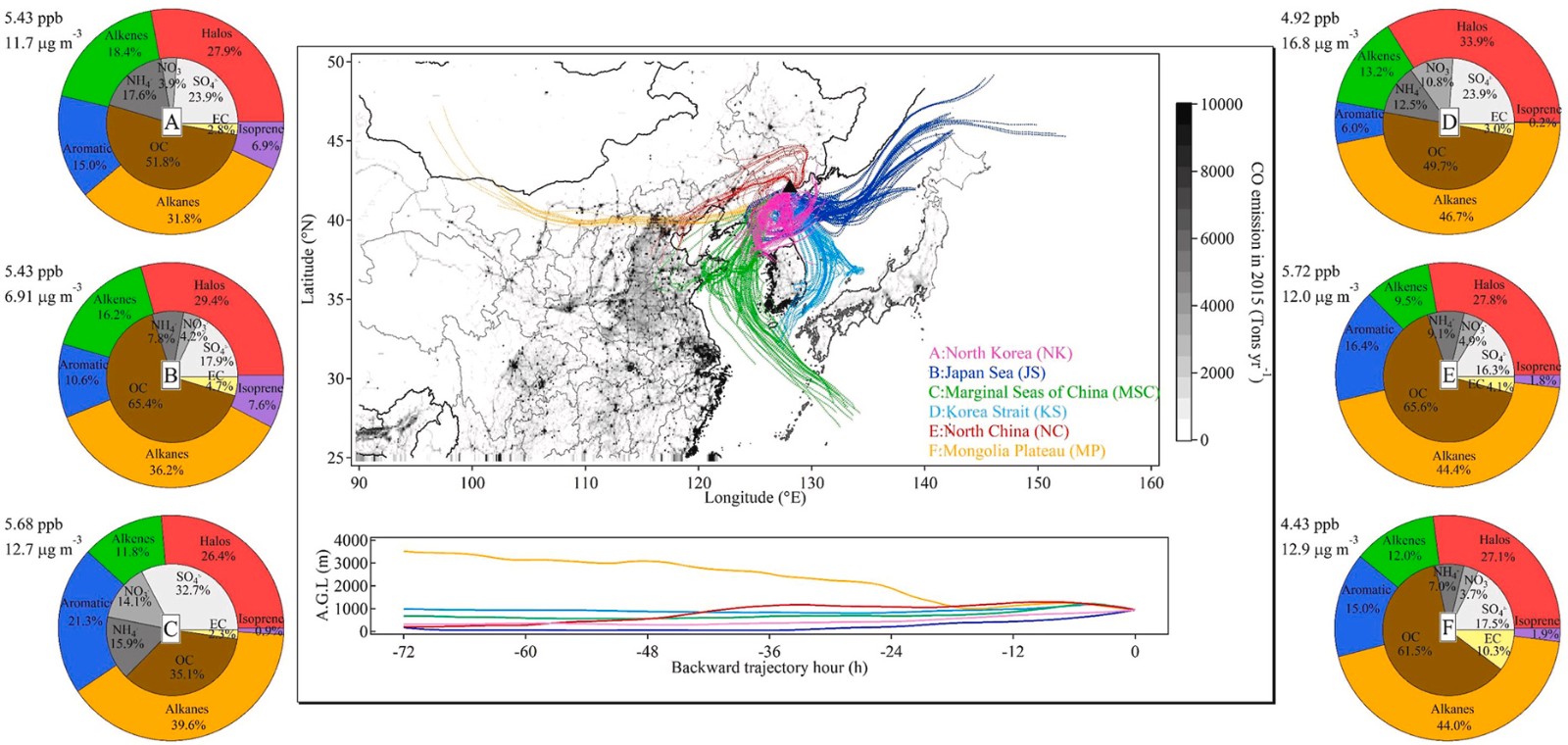张玉强
![]()
开通时间:..
最后更新时间:..
As part of the efforts to understand long-range air pollution transport in Northeast Asia, a comprehensive field measurement campaign was conducted at the top of Changbai Mountain (2623 m a.s.l.) from 25th July to 21st August in 2021. The ambient concentrations of trace gases and chemical characteristics of fine particulate matter (PM2.5) were comparable to those at background or free tropospheric locations in China, but exceeded levels at corresponding sites in Europe and the United States. Well-defined diurnal variations were evident in most air pollutants, including carbon monoxide (CO), sulfur dioxide (SO2), and nitrogen oxide (NOx), reflecting the influence of boundary layer development and local anthropogenic activities. Ozone (O3) exhibited a unique diurnal distribution, with lower concentrations during the daytime and higher levels at nighttime, indicating a pronounced impact of downward transport of O3-rich air from the upper troposphere during the nighttime. During the campaign, organic carbon (OC) constituted the predominant component of PM2.5, comprising 43% of the total, while sulfate (SO42−) was the most abundant secondary inorganic component in PM2.5, accounting for 26%. Combining the analysis of air mass backward trajectories, we found that Changbai Mountain is primarily influenced by air masses originating from North Korea and the Sea of Japan, constituting 62% of the total, and local vegetation biological emissions and anthropogenic emissions in North Korea notably affect the observation site. Conversely, the secondary aerosol components were most abundant in marine air mass originating from the marginal seas of China and the strait between the Korean peninsula and southern Japan. Utilizing the Lagrangian photochemical trajectory model (LPTM), a significant increase in particulate SO42− concentrations was observed when air mass passed through the marginal seas of China, primarily due to SO2 oxidation reaction. This study contributes to an improved understanding of the atmospheric chemistry in the high-altitude regions of Northeast Asia and underscores the substantial role of secondary inorganic aerosol formation during the transport of marine air masses.

Fig. 3. Three-day backward trajectories of air mass from 25th July to 20th August, and are classified to 6 types: North Korea (NK), Sea of Japan (JS), Marginal Seas of China (MSC), Korea Strait (KS), North China (NC) and Mongolia Plateau (MP). The CO emission data was obtained from Emissions Database for Global Atmospheric Research (EDGAR, https://edgar.jrc.ec.europa.eu/dataset_ap50).
Shan, Y., Zhu, Y., Qi, Y., Yang, Y., Mu, J., Liu, M., Li, H., Zhang, J., Nie, Y., Liu, Y., Zhao, M., Zhang, X., Zhang, L., Wang, Y., Li, H., Shen, H., Zhang, Y., Wang, X., Huang, L., Wang, W., and Xue, L.: Insights into atmospheric trace gases, aerosols, and transport processes at a high-altitude station (2623 m a.s.l.) in Northeast Asia, Atmos. Environ., 326, https://doi.org/10.1016/j.atmosenv.2024.120482, 2024.